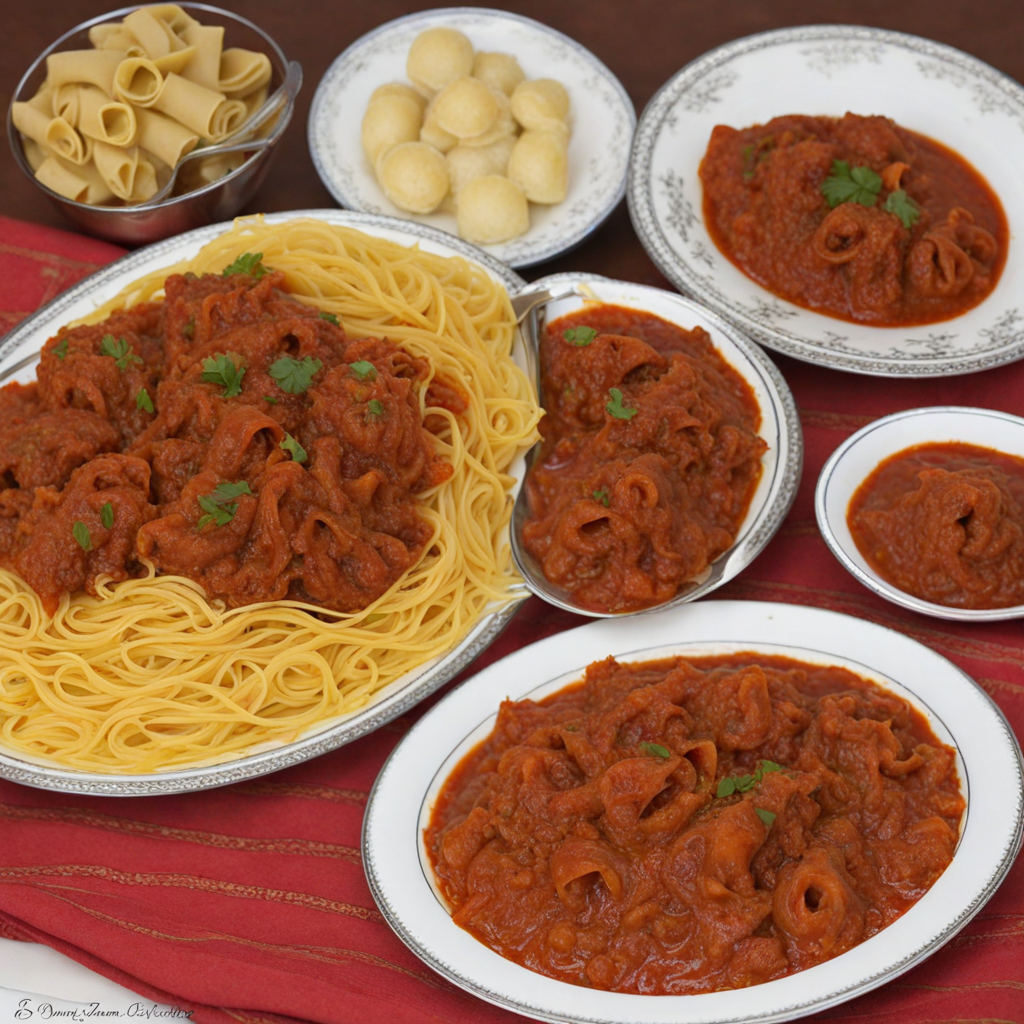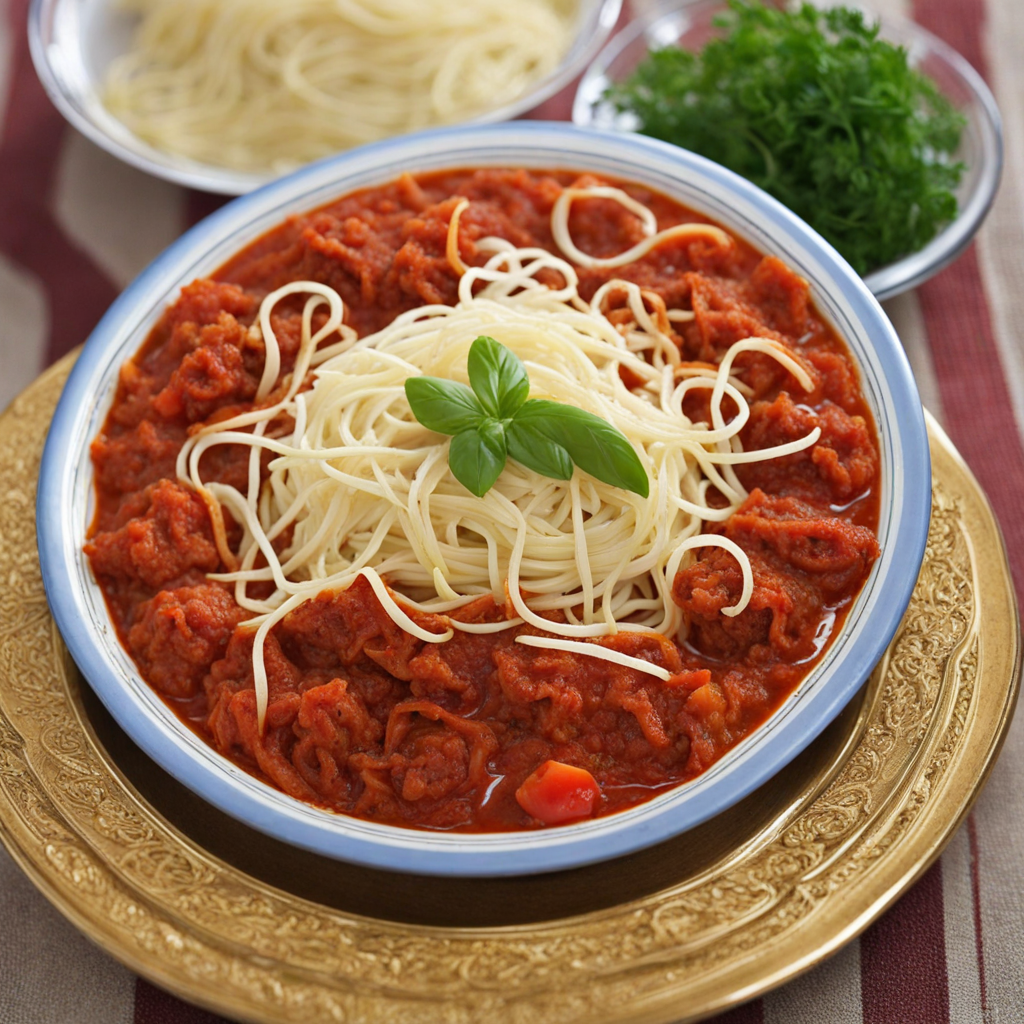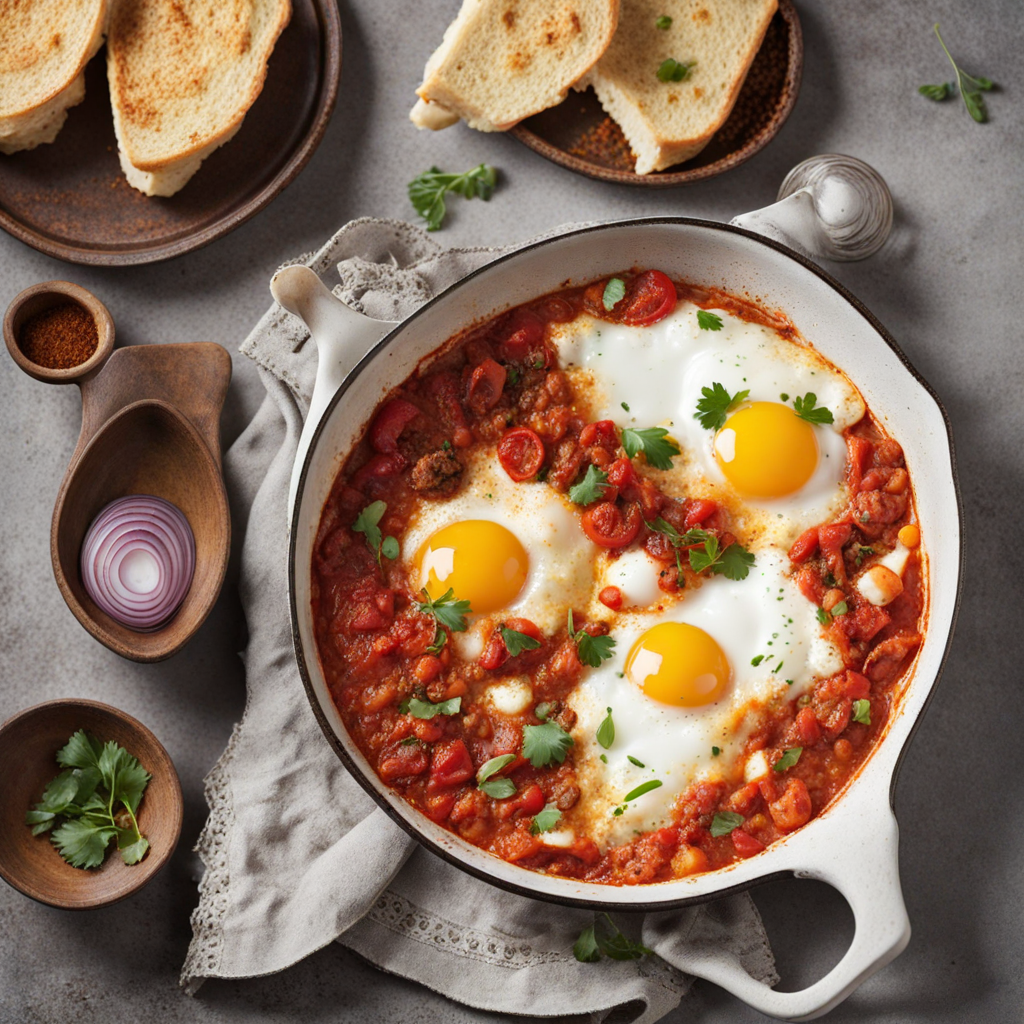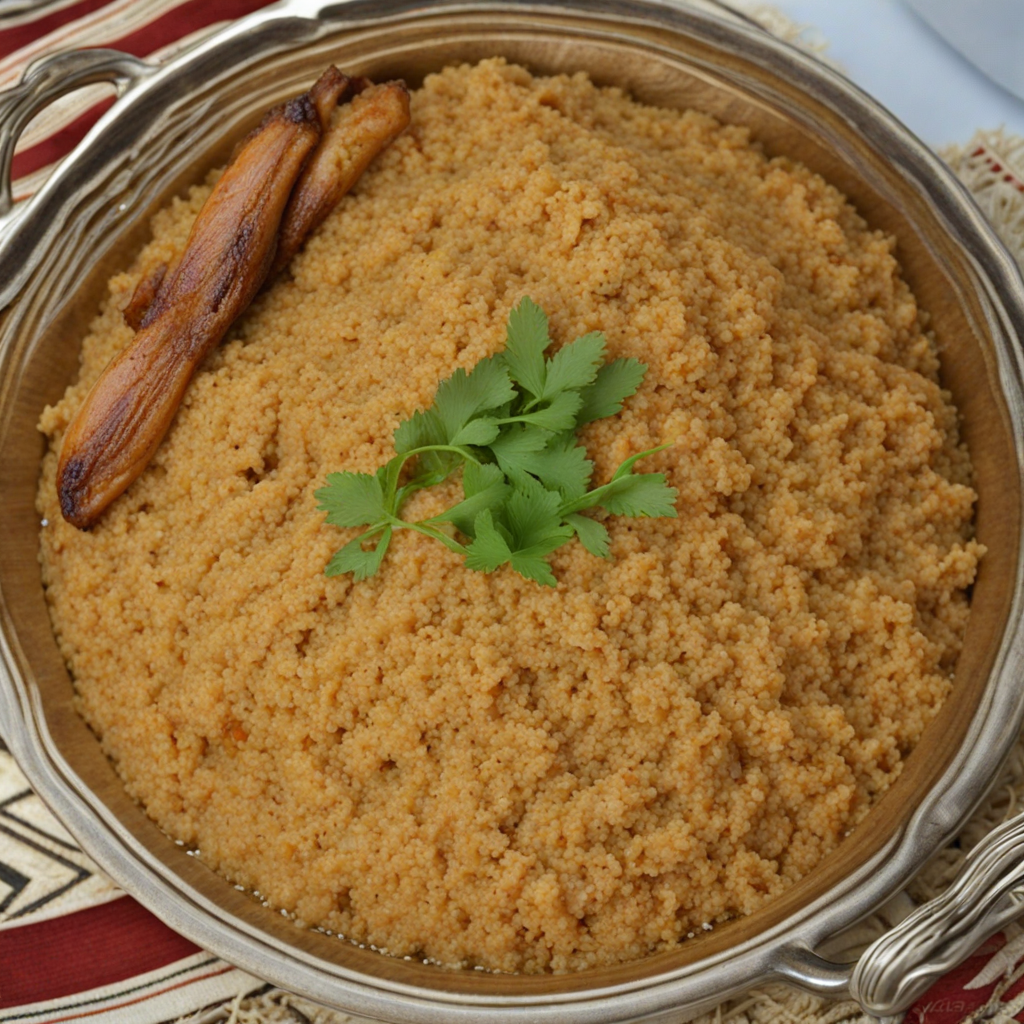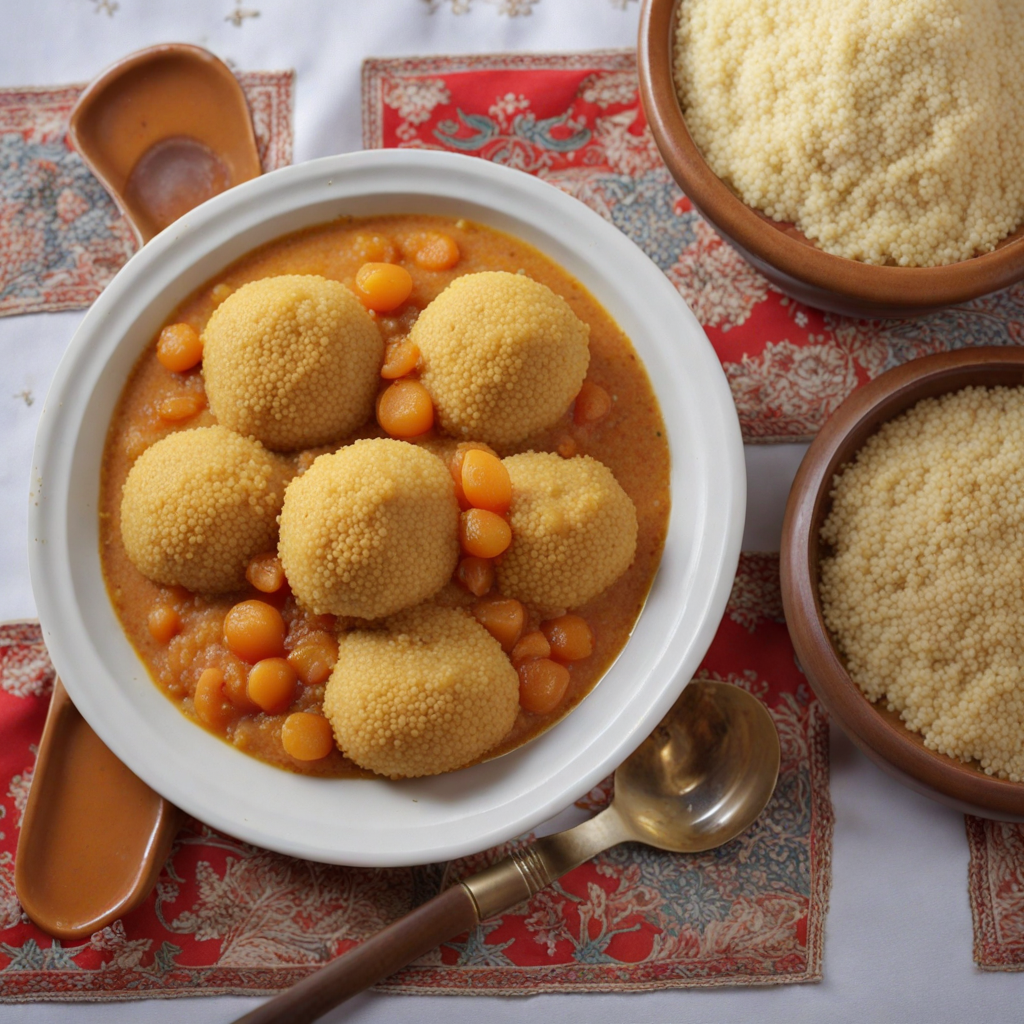Rishta
Rishta is a traditional Libyan dish that offers a delightful blend of flavors and textures, making it a unique culinary experience. At its core, Rishta consists of delicate, handmade pasta, often shaped into thin strands or small rounds, which are then layered with a rich, savory sauce. This sauce is typically made from a combination of tender meats, such as lamb or chicken, slow-cooked with a variety of spices, including cumin, coriander, and cinnamon, creating a warm and aromatic base that envelops each piece of pasta. The dish is often enriched with vegetables like carrots and potatoes, contributing to its heartiness and nutritional value. One of the standout features of Rishta is its preparation method, which involves a communal aspect that reflects the culture of Libyan dining. Families often come together to make the pasta from scratch, using simple ingredients like flour and water, kneading and rolling out the dough to create the perfect consistency. This hands-on approach not only enhances the flavor of the dish but also fosters a sense of togetherness and celebration around the dining table. Once prepared, the pasta is usually layered with the meat sauce and allowed to simmer, allowing the flavors to meld beautifully. The final presentation of Rishta is nothing short of inviting, often served in a large communal dish that encourages sharing. The dish is typically garnished with fresh herbs, such as parsley or coriander, adding a vibrant touch to the plate. The first bite of Rishta reveals a delightful harmony of flavors; the soft pasta absorbs the savory essence of the sauce while the spices dance on the palate, making it a comforting yet exciting dish. Enjoying Rishta is not just about the taste but also about experiencing the warmth of Libyan hospitality and the joy of sharing a meal with loved ones.
How It Became This Dish
The Story of رشتة (Rashta): A Culinary Journey Through Libya Origins of رشتة Rashta, a traditional Libyan dish, is more than just a meal; it embodies the rich tapestry of Libyan culture, history, and the resilience of its people. The dish is a type of handmade pasta, typically made from flour and water, which is then shaped into thin, long strands. Its origins can be traced back to the Berber and Arab influences that have woven together over centuries, reflecting the diverse culinary heritage of the region. The name "Rashta" is believed to derive from the Arabic word "rasht," which means to braid or twist. This etymology hints at the intricate preparation methods involved in creating this beloved dish. Historically, Rashta was prepared by families, particularly during special occasions, gatherings, and festive celebrations. It quickly became a staple in the Libyan diet, symbolizing community and togetherness. Cultural Significance In Libyan culture, food plays a crucial role in social interactions and familial bonds. Rashta is particularly significant during Ramadan, where it is often enjoyed as part of iftar, the meal to break the fast. The preparation of Rashta often involves multiple family members, turning the cooking process into a communal activity that strengthens family ties. The act of making Rashta is traditionally seen as a rite of passage for young women, who learn the intricacies of this dish from their mothers and grandmothers, passing down not just skills but also stories and cultural values. Moreover, Rashta is often associated with hospitality in Libyan culture. Serving Rashta to guests is a gesture of warmth and generosity, reflecting the importance of welcoming others into one's home. This dish transcends mere sustenance; it is a vehicle for cultural expression and a means of preserving heritage. Development Over Time Over the centuries, Rashta has evolved in its preparation and presentation, influenced by regional tastes, available ingredients, and cooking technologies. The traditional method of making Rashta involves blending flour and water to form a dough, which is then rolled out and cut into thin strands. This labor-intensive process is often complemented by the use of a specialized tool called "mushar," a wooden board used to shape the pasta. In the past, Rashta was often served with a simple tomato-based sauce, flavored with local spices. However, as Libya's culinary scene expanded, so too did the ways in which Rashta was prepared and served. Today, it can be found in various forms, often accompanied by rich meat stews, vegetables, or even in a more elaborate presentation with seafood and aromatic herbs. This versatility has allowed Rashta to maintain its relevance in modern Libyan cuisine, adapting to contemporary tastes while remaining rooted in tradition. The introduction of new ingredients and influences from other Mediterranean and North African cuisines has also contributed to the evolution of Rashta. The Libyan diaspora has played a significant role in this transformation, as families abroad adapt traditional recipes to incorporate locally available ingredients. This has led to a fusion of flavors and techniques, resulting in new interpretations of Rashta that still honor the original essence of the dish. Rashta in Modern Libya Today, Rashta continues to be a beloved dish in Libyan households. It is commonly found in restaurants and during family gatherings, where it is often served as a main course. The dish has also gained popularity among younger generations, who appreciate its rich history and the communal aspect of its preparation. In recent years, there has been a renewed interest in traditional Libyan cuisine, driven by a desire to preserve culinary heritage in the face of globalization. Chefs and food enthusiasts are rediscovering Rashta, experimenting with new flavors and presentations while respecting its traditional roots. This resurgence has sparked a culinary renaissance in Libya, as people seek to reconnect with their heritage through food. Social media has played a pivotal role in this revival, allowing home cooks and professional chefs alike to showcase their interpretations of Rashta. Platforms like Instagram and Facebook have become spaces for sharing recipes, cooking tips, and personal stories related to the dish. This digital community fosters a sense of pride in Libyan cuisine, encouraging a new generation to embrace and celebrate their culinary heritage. Conclusion Rashta is more than just a dish; it is a living testament to the cultural identity of Libya. Its origins reflect the rich history of the region, while its evolution showcases the adaptability of Libyan cuisine in a changing world. As Rashta continues to be enjoyed by families and shared among friends, it remains a symbol of unity, hospitality, and the enduring bonds that food creates. In every strand of Rashta lies a story, a connection to the past, and a promise for the future. As Libyans navigate the complexities of modern life, the act of coming together to prepare and share this beloved dish serves as a reminder of the importance of heritage, community, and the simple joy of breaking bread with loved ones. Whether served during a festive occasion or enjoyed as a comforting meal on a quiet evening, Rashta will undoubtedly continue to hold a cherished place in the hearts and homes of Libyans for generations to come.
You may like
Discover local flavors from Libya


